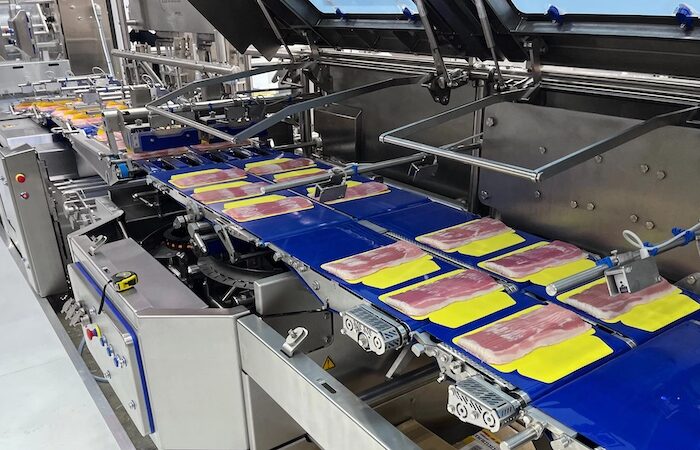Industrial Opportunities and Investments

In talking with manufacturers, reps and distributors there is concern about the longer-term commercial construction market given a dearth of opportunities for Q4 and beyond, however, the industrial market may represent an opportunity.
According to Susan Brooke Sutherland in her June 26th Bloomberg Opinion Industrial Strength newsletter, there could be opportunities in the industrial sector due to “factory reshoring”. In the newsletter she mentions that Julian Mitchell, a Barclays Plc analyst, commented that he “sizes the reshoring of manufacturing activity as a potential $70 billion market opportunity over five years with about 15% of this linked to automation equipment.”
One of the growth areas, according to Mitchell is “reshoring via robots” to capture productivity and labor benefits.
Obviously, this can benefit Rockwell, who reportedly has 60%+ share in this space, Rockwell distributors and other industrial manufacturers. And yes, there is industrial construction for the contractor-market.
Companies are talking about “shortening” supply chains, there is the backlash regarding China and the need to further support “made in America” (or at least North America) as well as healthcare manufacturing (PPE and pharmaceuticals).
For insights on “why reshoring”, take a read on this great article from Dan Dobski at Connexion on why companies need to, at least, diversify their supply chain. (and it could be a good article as a “door opener / conversation starter with prospects / customers).
Along with the labor benefits, this then correlates to company goals for automation in general to improve productivity as well as employee safety.
Converting reshoring into sales
While it is difficult for sales to call on customers “face to face” to create demand for these types of initiatives, or even learn if a company is considering them, given that many customers have stringent visitation policies, manufacturer and distributor market departments need to understand customer issues and opportunities to communicate a value proposition and the financial benefit.
- This may involve some collaborative marketing among manufacturers (either driven organically or a distributor can be the driver.)
- Sharing concepts via short videos
- Developing marketplace webinars and/or conducting smaller community-driven meetings (as applicable)
- Utilizing PR tactics to position yourself as “the local resource … the company with the expertise”
- Partnering with other local companies that are calling on the same customer and could also benefit from the opportunity.
- Having a section of your website devoted to digital transformation with applications, case studies, white papers, products and more. It’s about lead generation as companies don’t ask for input on this, they first conduct research (and distributors shouldn’t always lead the prospect to the manufacturer site, they should position themselves as the expert, aggregate manufacturer content and try to integrate themselves into the prospect / customer conversation.)
- Identify ways to coordinate with local officials who recruit companies to your area. It can get you into earlier discussions with companies and position you with thought leaders.
From an industrial distributor viewpoint, the “reshoring”, combined with manufacturing seeking to improve productivity, can be critical to longer-term success as well as company value.
Digital Transformation of the Plant Floor
Catrina Vargo, a Rockwell regional marketing leader, recently highlighted Rockwell’s ROKLive, and highlighted how companies are accomplishing digital transformation, which is becoming a major objective for companies. Her five takeaways were:
- They recognize their workforce is the key factor to the success of a digital transformation
- Remote work has inspired companies to service plants differently than ever before
- Best practice sharing is vital to digital transformation
- Cybersecurity was a key theme and good place to start in many digital transformations
- Once teams were collaborating enterprise-wide, great things happened
For each of these she mentions case studies that were presented. To learn more about digital transformation and view the case studies you can register for ROKLive to see the recorded sessions until November 30th (and since it was open for end-users, there is nothing that says need to be a Rockwell distributor or customer … you could be a prospect).
In considering her five points, you can see that digital transformation:
- Requires a consultative sell and an informed sales organization that can talk at many levels within a client to understand their needs and “walk” them through a process.
- It’s a time-based sale.
- There can be unique opportunities to “get deep” with a customer. Even consider a value-added opportunity such as “best practice sharing” by setting up local best practice groups among customers.
- Technical is key, especially due to cybersecurity.
She also has a very interesting excerpt from a webinar on the importance of a connected supply chain, which would be a topic of extreme interest to any manufacturer as they address COVID and prepare themselves for the future.
Investing in Circuit Breakers
Speaking of Rockwell, they and ABB invested in a Charlotte, NC-based company called Atom Power, which is a digital circuit breaker company. This was round two financing and Siemens had invested in the first round. Atom Power’s “all-digital circuit breakers and panels are for high-stress industrial and commercial settings, from factories and data centers to large-scale electric vehicle charging systems.” According to the article, “digital circuit breakers aren’t going to find cost-effective uses in all settings. But the increasingly diverse electrical systems in buildings, from rooftop solar and batteries to increasingly sensitive digital loads, are driving the industry to adopt digital technologies to replace traditional electromechanical systems.” While still a start-up, with “interest” from ABB, Rockwell and Siemens they have a good start as not only do they get money and knowledge, they also have either access to prospects, distribution and/or opportunities to private label / license technology.
Identifying Opportunities
The key is identifying opportunities and targeted investments. While the office market will experience disruption as evidenced by companies adopting work from home policies for longer-term, there are opportunities in every market for every type of distributor. It may be critical to think “outside the box” of your traditional planning process. It’s no longer “how much can customer XYZ generate for me next year.” Now it is “where are the opportunities and how can I best serve my customer.”
Consider this, do you know the top 10 (or 20 or 30) NAICS codes, based upon number of locations (and perhaps other criteria), in your market? Could this give you a sense of “opportunity”? Are you tracking the type of project you quote on? Or the type of “application” if your industrial? What insights can you derive from this?
Retasking Sales To Use Incremental Time
While companies are busy servicing customer needs, salespeople (distributors) and regional sales managers (manufacturers) do have incremental time. The challenge is that right now it is being consumed by continuous online webinars (training) and update meetings. Perhaps it’s time to dial some of it back and task them with marketplace / customer research? And the benefit of having them do customer research is 1) they become more educated on their market / customers and 2) it may create another reason to talk to the customer, express interest in their business, learn something and maybe it will lead to an unexpected opportunity. Worst case it conveys you have interest in them for something other than the next order.
Consider this as giving them a different sales approach.
Your Share of $90 billion?
Remember, even if forecasts hold true, the electrical market is still a $90 billion market! The question is, “how are you preparing to take share in 2021?”























